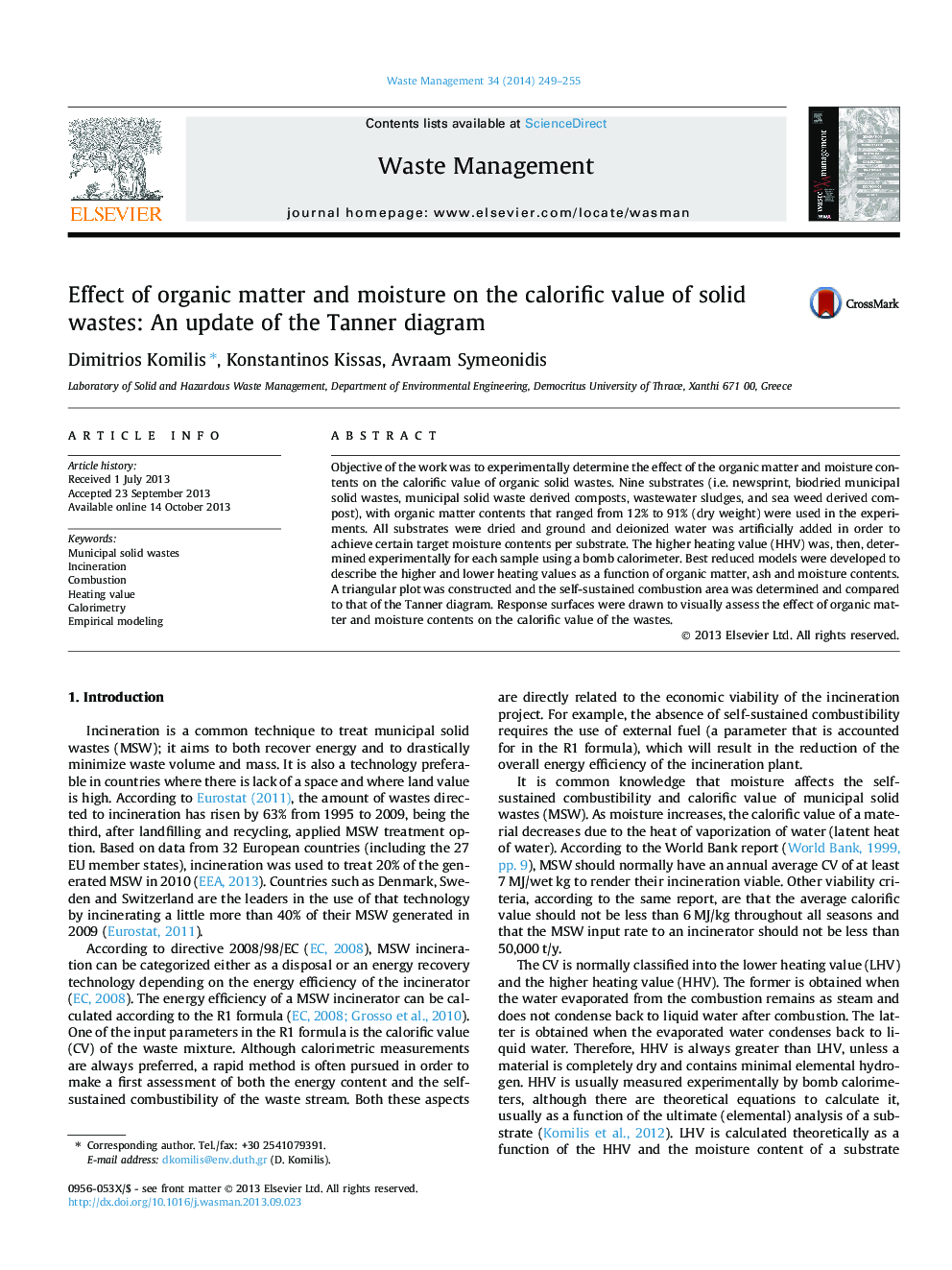| Article ID | Journal | Published Year | Pages | File Type |
|---|---|---|---|---|
| 6355154 | Waste Management | 2014 | 7 Pages |
â¢Moisture contents were artificially prepared using nine dried organic substrates.â¢The high calorific value of the organic substrates was measured via a calorimeter.â¢The self-sustained combustion area was depicted on a triangular plot.â¢Regression modeling was preformed to describe the calorific value.â¢The Tanner diagram was updated and a response surface was graphically included.
Objective of the work was to experimentally determine the effect of the organic matter and moisture contents on the calorific value of organic solid wastes. Nine substrates (i.e. newsprint, biodried municipal solid wastes, municipal solid waste derived composts, wastewater sludges, and sea weed derived compost), with organic matter contents that ranged from 12% to 91% (dry weight) were used in the experiments. All substrates were dried and ground and deionized water was artificially added in order to achieve certain target moisture contents per substrate. The higher heating value (HHV) was, then, determined experimentally for each sample using a bomb calorimeter. Best reduced models were developed to describe the higher and lower heating values as a function of organic matter, ash and moisture contents. A triangular plot was constructed and the self-sustained combustion area was determined and compared to that of the Tanner diagram. Response surfaces were drawn to visually assess the effect of organic matter and moisture contents on the calorific value of the wastes.
